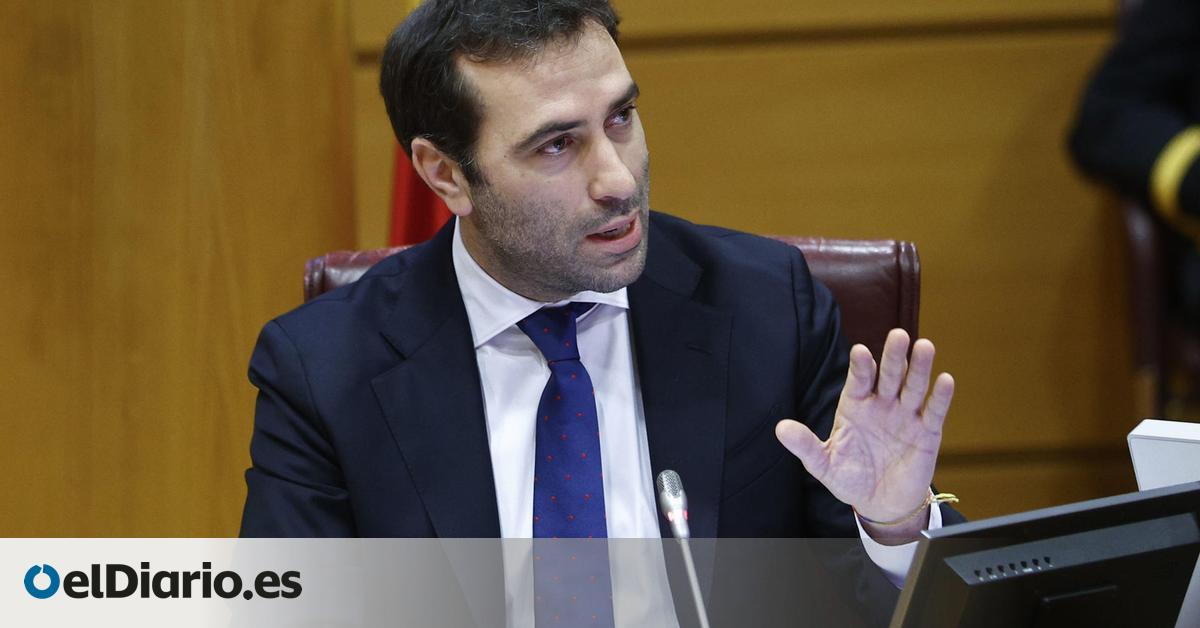
The Spanish economy grew by 2.5% in 2023, five times more than the eurozone as a whole. The INE confirmed this Tuesday that GDP (Gross Domestic Product) advanced 0.6% in the fourth quarter, exceeding all expectations and leading developed countries.
Mainly, due to the resistance of household consumption to inflation and the increases in interest rates of the European Central Bank (ECB) and due to the strength of the foreign sector, thanks to the strong increase in exports (with a notable and innovative behavior of the sale of consulting services and related to new technologies) and the tourism boom.
The Minister of Economy, Commerce and Business, Carlos Body, has highlighted some keys to this resistance of household consumption: “The affiliation [de trabajadores a la Seguridad Social] record mark and is already close to 21 million members. “Practically 4 out of every 10 jobs created in the eurozone in 2023 were in Spain.”
“Inflation has been reduced by 8 points in just a year and a half, after the peak in the summer of 2022. Its moderation is compatible with growth,” he added this Tuesday. Both factors, together with wage increases, have allowed families to gradually recover part of the purchasing power lost since 2021.
The biggest acceleration in a quarter since spring 2022
Furthermore, the notable increase in GDP in the final stretch of 2023 supports “the objective of growing by 2% in 2024”, as defended by the coalition government. The 0.6% advance is the largest since the rebound in the second quarter of 2022. Our country completed the recovery after the shock of the pandemic about a year and a half ago.
This growth and the strength of the labor market has allowed the public deficit (the imbalance between State income and expenses) to end at 3.7% in 2023, “beating all forecasts and almost completely closing the gap with the pre-COVID situation,” said Carlos Cuerpo. In fact, tax collection reached a record of 271,935 million last year.
At the end of 2023, the level of GDP is already almost 3 percentage points higher than the level of 2019, that of before the COVID crisis. Precisely, family consumption did not complete its recovery until the last quarter of last year, weighed down by the impact of price increases and by the rise in financing costs, due to the ECB’s aggressive strategy to fight inflation.
In compensation, one of the main supports for activity has been public spending, which is already more than 10 percentage points higher than in 2019, favored in part by the Recovery Plan. On the other hand, a very positive evolution of exports is observed based on the recovery of the competitiveness of companies.
Thus, the weakness of the foreign sector is presented as the biggest obstacle for Spain’s economy in 2024, due to the greater slowdown in Germany, France, Italy or the entire eurozone (our country’s main trading partners), which are even dealing with the risk of falling into technical recession (two consecutive quarters of GDP contraction). A situation that is not contemplated in Spain.
The forecasts suggest that family consumption will continue to resist due to the drop in inflation, the ECB’s interest rate cuts, income protection measures (such as increases in the SMI and pensions), the progressive withdrawal of the rest of the measures against price increases (such as the reduction in VAT on basic foods, the electricity bill or the maintenance of discounts on public transport) and for salary improvements in general (although they are being insufficient to recover the purchasing power lost in recent years).
The big problems for households in Spain will continue to be the inaccessibility of housing, especially in large capitals, and inequality. The 2023 Living Conditions Survey confirmed that the social response to the chained losses of the pandemic and the Russian invasion of Ukraine has brought inequality to a minimum. However, inflation and the housing market continue to damage purchasing power and cause dissatisfaction among many working families.
As seen in the previous graph, inequality skyrocketed after the great financial crisis of 2008, with austericidal policies. The reality is very different today. On the other hand, the same INE survey also includes the blow that only the monster of inflation can deliver. The lack of meat, chicken and fish has increased to maximum levels, up to 6.4% of households, and energy poverty has risen to slightly above 20%, among other alarm signals.
The weakness of investment
For its part, the lowering of business costs (mainly energy and raw materials) and the deployment of the Recovery Plan will encourage business investment, the most delayed component of activity since 2019 and of which economists remember that future growth depends.
“There are 4,751 new investment projects in Spain in the last 5 years. We are the fourth country in the world that has received the most new investment projects,” highlights, however, the Minister of Economy. “About half of the funds allocated in the first phase of the Recovery Plan, some 32.3 billion euros, have already reached the real economy,” insists Carlos Body.
Meanwhile, the slowdown in exports will be partially offset by tourism and by the fall in the price of oil, gas and other resources that our economy needs to acquire abroad.
The transformations of the economy
In the reconstruction of the pandemic, the evolution of our country’s economy has been highlighted by the unprecedented social response (financing of ERTE, design of the IMV, revaluation of pensions…), and by other measures that have favored structural changes in the labor market, in the greater weight of sectors related to innovation and technology and in the growth of service exports (and not just tourism).
The effort in public spending (thanks to the lifting of the previous EU fiscal rules in 2020) has allowed the Government to make these decisions and ensure that family incomes have resisted the damage of inflation or that company profits exceed pre-COVID levels.
In the opposite sense, it has triggered indebtedness (public debt relative to GDP, already swollen as a consequence of the 2008 financial crisis), which has only been reduced from the maximum of 2020; when it exceeded 120%, due to economic growth, given the high budget deficits of this reconstruction phase (in 2022 it was still 4.7% of GDP, in 2023 it closed at 3.7%).
Now, the deficit has to be reduced even further. With more flexible conditions than a decade ago, yes. This path has already been marked by the last anti-crisis decree, which the Council of Ministers approved at the end of 2023 and which has cut its cost to 5,300 million, from 15,000 million in 2023 and 22,000 million in 2022.
“Political fragility, resilient economy”
The cruising pace that economic activity has taken is not in danger. “Despite the political fragility [que ha impedido aprobar los Presupuestos Generales de este año]the Spanish economy appears relatively resilient, with average real GDP growth of 2% in 2024-2027, compared to 1.2% in the eurozone,” debt rating agency S&P recently noted.
“Net exports will continue to be key. Buoyant tourism revenues kept exports afloat in 2023, but we expect other components to increase with the recovery in foreign demand in 2024-2027. This will partially offset the increase in imports due to the dynamism of domestic demand and capital imports,” he details.
S&P highlights “solid private consumption (three-quarters of GDP). As for other eurozone countries, the relaxation of financing conditions [por la futura bajada de los tipos de interés del BCE] and declining inflation will boost real incomes and consumer spending. But Spain will recover from a more solid base after a slight slowdown in 2023 thanks, in part, to the partial extension of the Government’s shock measures.
“Compared to its industrial counterparts in the eurozone, Spain has benefited from the greater agility of its economy, driven by services (70% of GDP) and has significantly diversified its energy supply in the face of the energy price crisis. 2022”, he continues. In addition, it accentuates the strength of the labor market and the support of public investment, in part due to the deployment of the Recovery Plan. Aside from the political instability, which he precisely warns could delay the disbursements of European funds, the other negative point that he highlights is “the sluggishness of private investment.”
Source: www.eldiario.es

